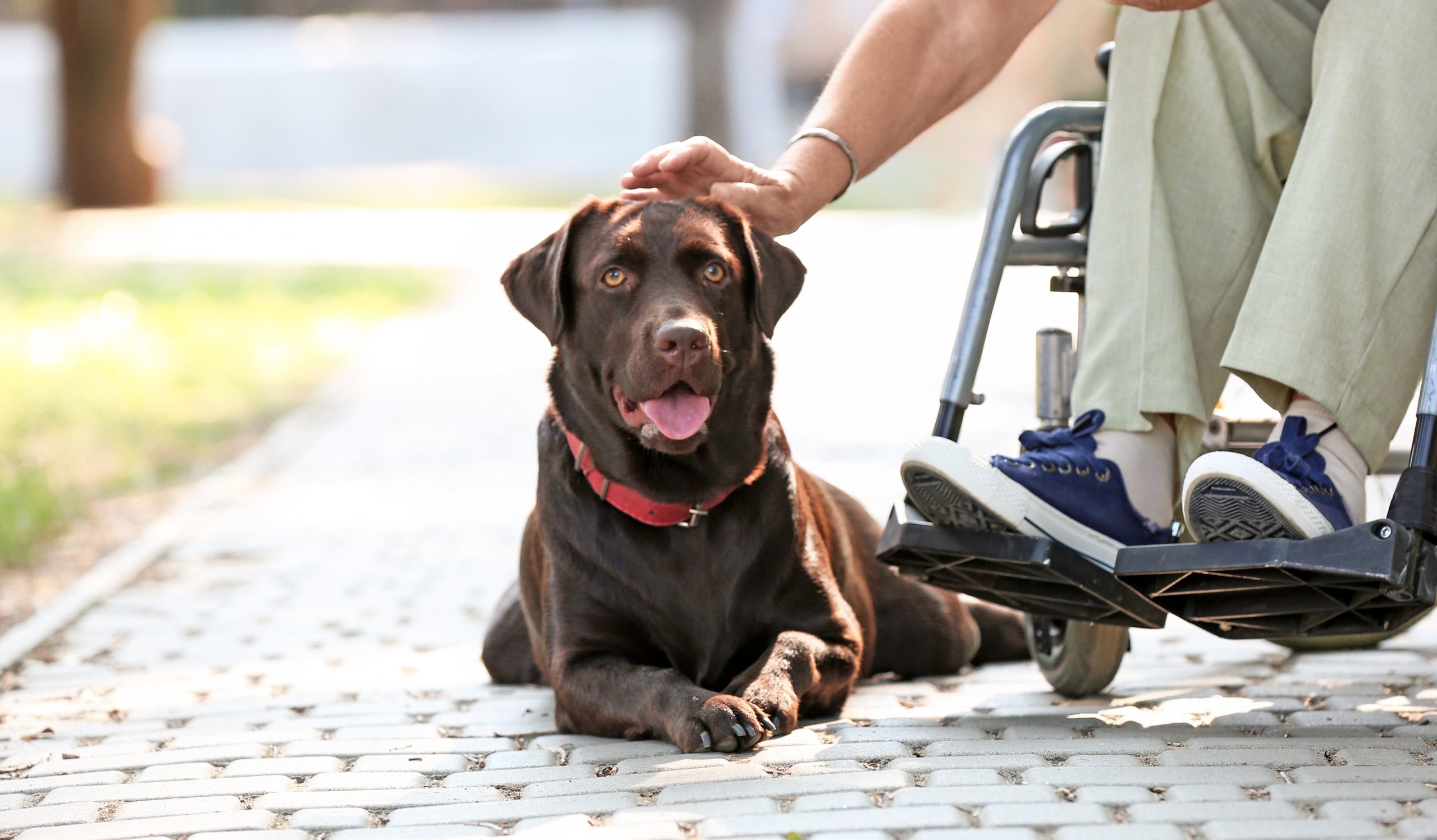
Considerations for Selecting a Pup as a Service Dog Prospect part 1- introduction to service dogs
The following blog post was written by Jillian Emerson, owner and breeder of American Poodles at Work, APAW. Jillian’s program is currently on hiatus, but you can learn more about it here.
The term ‘service dog’ has become very popular in recent years, particularly with more people embarking on the journey of Owner-Training – acquiring a service dog prospect which they will personally raise and train for their specific medical needs. Let’s take a closer look at what a service dog is, what is required of them, and the role of a breeder in this process.
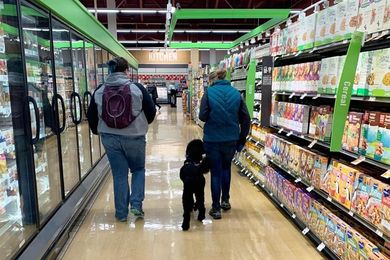
What is a service dog? What is required of the dog as an assistant?
(Side note – technically ‘assistance dog’ is the proper umbrella terminology for a dog assisting a partner with any sort of disability; a ‘guide dog’ assists a blind handler, a ‘hearing dog’ assists a deaf handler, and a ‘service dog’ assists a handler with any other disability including needs such as physical assistance, alerting or response to chemical changes or allergen detection, and response to psychological state. The terms were muddled during the writing of some laws, and now ‘service dog’ has become the more recognized term in the US. This article will shift to proper terminology after describing the different categories of assistance.)
The Americans with Disabilities Act is the federal law in the US which addresses service dogs and the rights of a disabled handler to bring their trained dog with them even in many public areas that typically do not allow dogs. The ADA defines a service dog as the following: […] dogs that are individually trained to do work or perform tasks for people with disabilities. Further, a service dog must be an unobtrusive helpmate, meaning that the dog’s presence does not impact other people, animals, property, services or the general atmosphere, and that the dog remains ready and able to assist with their trained tasks whenever the need should arise. Service dogs are generally considered ‘medical equipment’, and you can think of them in the same category as a wheelchair, a white cane, a hearing aid, medication, etc.
There are many dogs touted as being service dogs who do not meet the above criteria – they may not be trained to assist a disability, and/or they may not be unobtrusive in public, and/or the handler may not even be disabled in a way that a service dog would be an appropriate medical tool. This is an entirely different topic and our focus in this article will assume that the handler and dog are following an appropriate path towards becoming a legitimate working team.
Different Disabilities, Different Working Roles
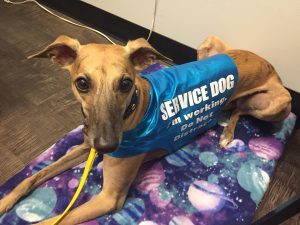
As mentioned above, there are a variety of roles an assistance dog may perform based on their handler’s needs, and this can have an impact on what type of characteristics the dog should have.
- A guide dog needs to have the confidence to take charge and lead their partner, taking many of their cues from the environment (stopping at curbs, going around obstacles), and also needs to have ‘intelligent disobedience’ which is when they ignore the handler’s cue because the response would be unsafe – perhaps a bicyclist is approaching, or there is construction or spilled trash that needs to be avoided; they are typically large enough to lead from a harness while still having hips/flank within touching space of their handler, and they typically need to be raised from puppyhood in part to avoid habits that could be challenging for a blind handler to notice.
- A hearing dog needs to be very alert to the environment and good at pinpointing sounds, with the energy and enthusiasm to respond happily even through the night; they are often smaller sized and can often be found in the shelter – the high energy, social dog who wants to explore everything around them is a challenging pet and often ends-up relinquished to a shelter.
- A service dog for mobility needs to be calm, handler-focused, content to just follow along like a shadow until assistance is needed; they still need confidence but not in the ‘taking charge’ sense that a guide dog has; the size can vary greatly based on the handler’s task needs, but overall energy is on the lower side and the dog prefers to observe rather than participate when there is fun in the environment; again, raising from puppy-hood is usually best, in order to avoid challenging habits but also because it is very difficult to find an adult dog of the proper temperament – this is a sweet, easy dog, not one that an owner is likely to give up.
A service dog for a detection/alert/response type role needs a careful balance of handler focus and environmental focus, based on the scent/s they need to respond to – a scent from the handler (such as low blood sugar, on-coming seizure or cardiac/anxiety episode) vs a scent in the environment such as presence of an allergen; some handlers also need a dog to provide certain guiding tasks as well, such as leading them out of a building while handler is in an altered mental state; size and energy and focus needs vary greatly, so puppy-raising vs ability to find in a shelter also vary.
Program Training vs Private Training/Board vs Owner-Training
In past decades it was a given that an assistance dog of any type was program-trained through a professional organization, had passed a variety of temperament, health and training criteria, and was then paired with a qualifying handler who went through extensive training to learn how to work with their new dog. These programs have gotten dogs from shelters, breeders, and many ultimately create their own breeding program after realizing the success rates that can be achieved when the genes and raising are all in favor of the eventual role. Success rates at the program level vary by many factors, anywhere from around 20-80%; however, the success rate for the new handler is very high because the dog has already met extensive criteria… not only that, but most programs will guarantee a working dog, which means that they will replace the dog with a better match if needed.The dogs are owned by the program through graduation (some programs own for an extended trial period, others own the dog for life); the cost to the handler varies greatly depending on the fundraising structure of the program, from $0 to $10,000-25,000+; the amount requested is not an indication of the quality of the dog or the training received.
There have always been some owner-trainers, but they’ve been in the vast minority in the past and they have worked hard to meet (and often exceed) the training levels produced by assistance dog programs. Over the recent decade there has been a boom in owner-training, which has resulted in an unfortunately high percentage of handlers who neither understand how to raise and public access-train nor how to task-train or critically assess the assistance dog team of them and their dog. There has also been an increase in private training/’board and train’ businesses, which too have an unfortunately high percentage of trainers who don’t truly know what they are doing and/or are using methods which do not produce reliable results (and too frequently harm the dog physically or psychologically). Breeders can play an important role in raising the current standards by helping provide suitable puppies to owner-trainers who have carefully considered the possible outcomes and have set themselves and their prospect up for success.
Owner-trainers and private trainers are different from programs in that typically the owner purchases a dog as a ‘prospect’ which they own and pay expenses for regardless of whether the dog ultimately becomes an assistant. This means that the owner makes a commitment to a specific dog prior to the dog proving that they are capable of the role the owner needs; this in itself creates a lower rate of graduation and long-term success. Some private trainers will select and start training dogs and determine which partner they’ll match a dog to once the dog has met certain criteria, but the new partner typically still needs to purchase the dog and pay for the upcoming customized training without a guarantee that the dog will continue to be right for their needs. The ultimate cost from purchase of pup through ‘graduate level training’ varies just as widely as from a program, but typically falls into the $5,000-20,000 range… with the caveat that none of it rolls over to the next prospect if the first doesn’t work out for any reason. This means owner-trainers need to be extra careful to stack the odds in their favor as much as possible; and it means breeders (with professional puppy evaluation) need to be realistic about whether a particular puppy is likely to succeed for assistance in a particular home.
Thank you to Jillian Emerson, owner and breeder at American Poodles at Work, APAW for writing this and the next installment of this blog!
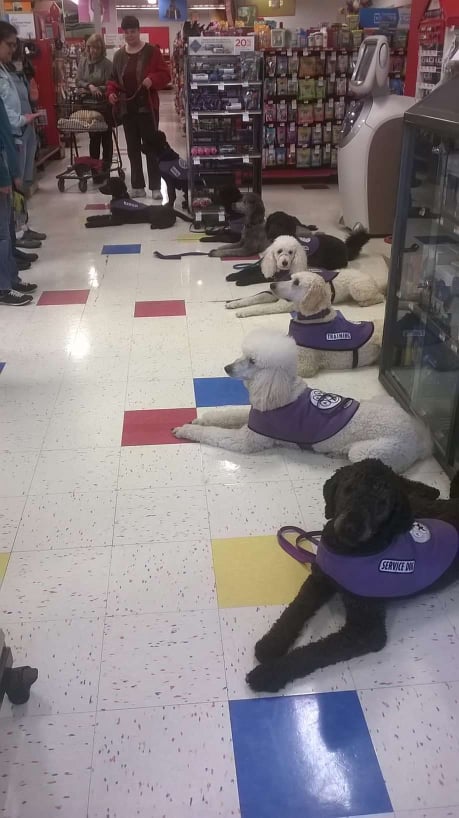
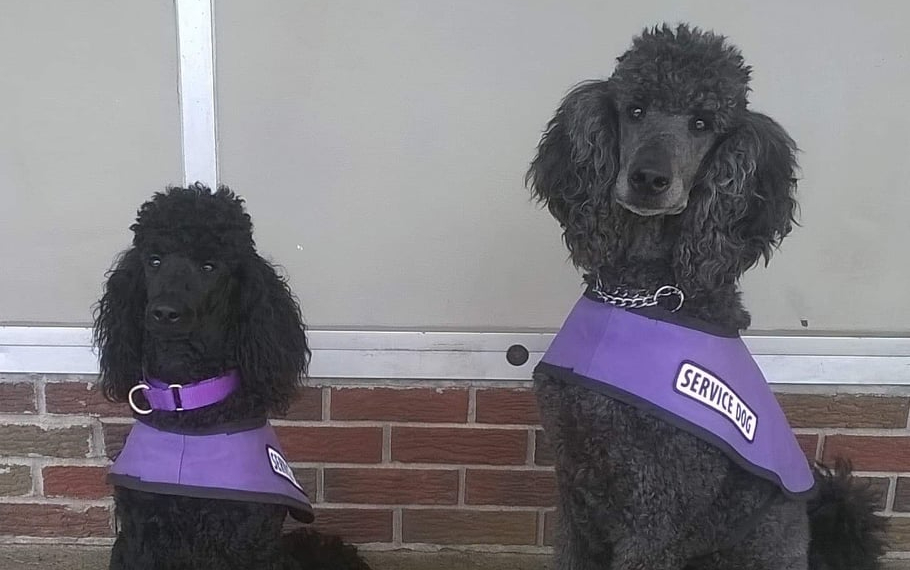
 Previous Post
Previous Post Next Post
Next Post


